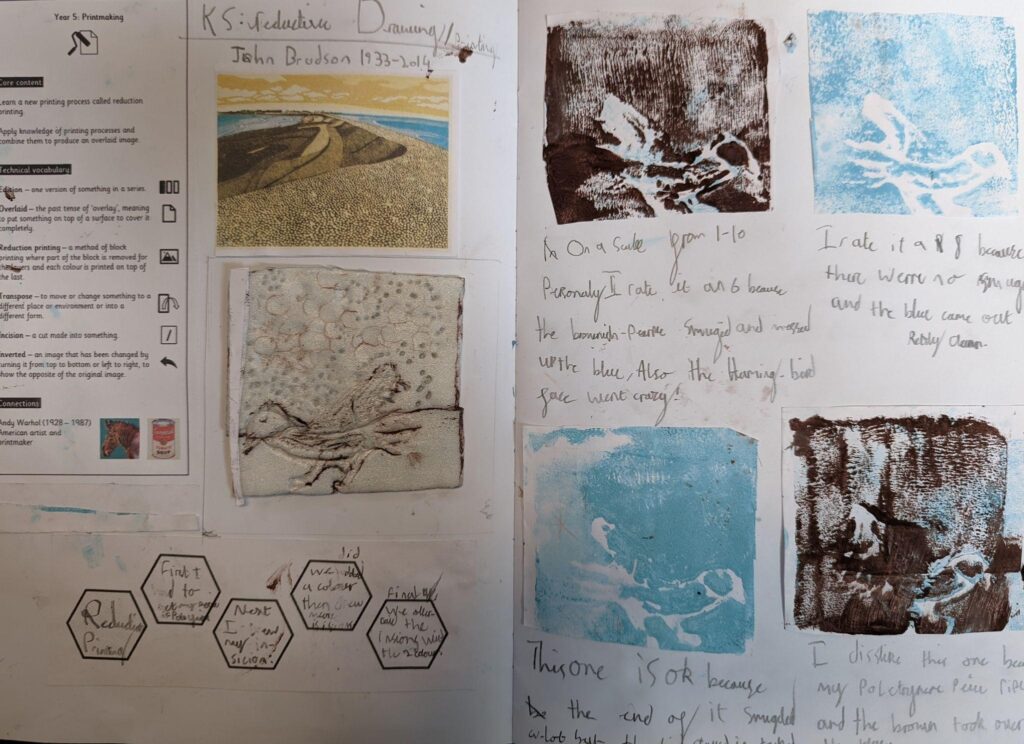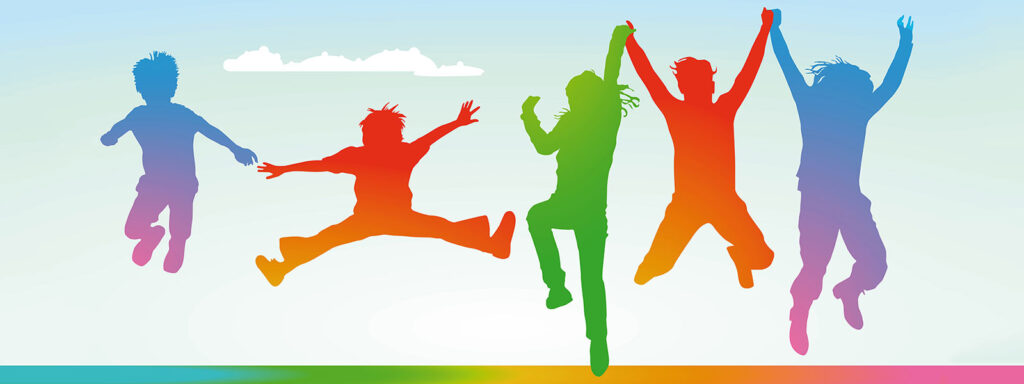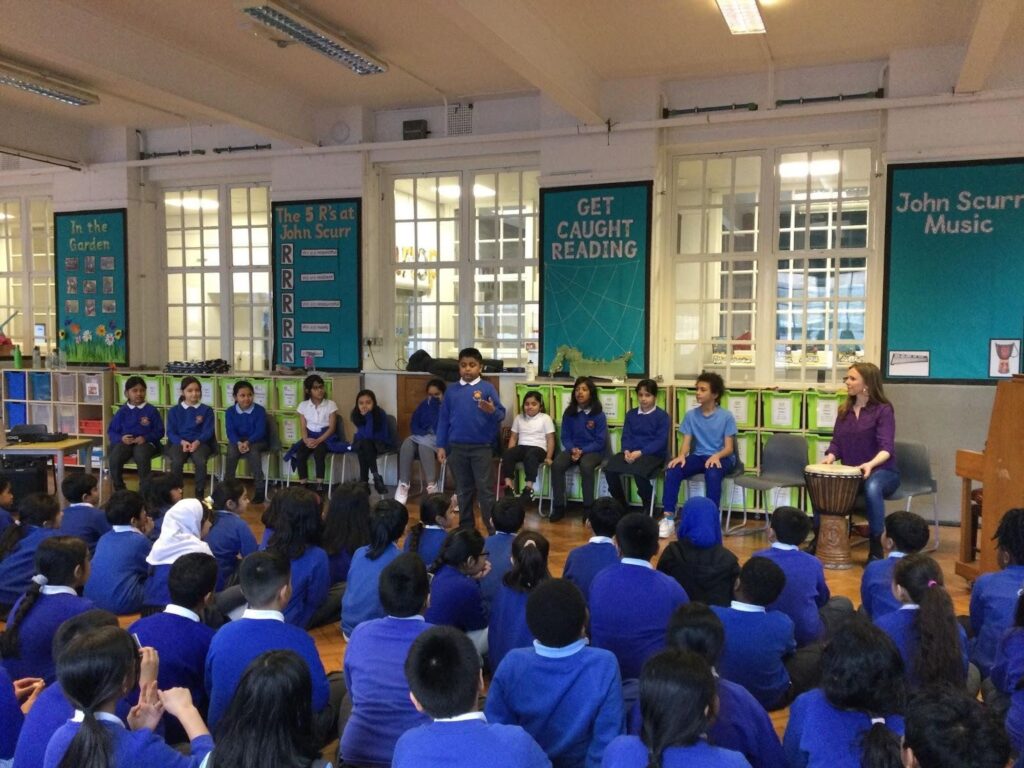Creative and Social Development
Art & Design
To promote resilience, develop communication and ensure all pupils have access to all learning possibilities both in and out of the classroom. To promote resilience, develop communication and ensure all pupils have access to all learning possibilities both in and out of the classroom.
Intent
At John Scurr we have embraced the new curriculum in Art and design. Our curriculum intent is for pupils to learn more, do more and know more

What do we teach
- Year 1
- Drawings based on seasonal changes and weather,
- Paintings inspired by Mondrian
- Printmaking
- Textile portraits
- Inukshuk sculptures
- Paul Klee inspired collage
- Creative response to the whole school project.
- Year 2
- Mark-making
- Wassily Kandinsky inspired paintings
- Repeated patterns in printmaking
- Abstract collages
- 3-dimensional sculptures inspired by Aboriginal Art
- Creative response to the whole school project.
- Year 3
- Stone Age drawings
- Paintings and mark making
- Textured prints and mono-prints
- Storytelling through textiles
- Louise Bourgeois and 3D insects
- Creative response to the whole-school project
- Year 4
- Drawings inspired by Giorgio Morandi and Anglo-Saxon artefacts
- Georgia O’Keeffe paintings
- Gilbert Ahiagble weaving and dyeing techniques
- Alberto Giacometti inspired wire sculptures
- Painting techniques revisited looking at Helen Frankenthaler’s work
- Creative responses to the whole school project.
- Year 5
- Subtractive drawing and enlarging images
- Reduction and stencil print-making linked to the work of Andy Warhol
- Lesley Richmond inspired nature collages
- Barbara Hepworth sculptures
- Watercolour techniques
- Creative response to the whole school project.
- Year 6
- Portraits inspired by Frida Kahlo
- Still Life paintings
- One-point perspective
- Dale Chihuly inspired 3D structures
- Terry Gilecki inspired water paintings
- Creative response to the whole school project.
How do pupils learn
Students develop their ideas and skills in sketchbooks, using a variety of different materials and techniques every year. Each unit is supported by knowledge organisers which provide key artistic language and vocabulary students need to describe artworks and the process of art-making – informing both their own artistic practise and their critical thinking around key artists and artistic movements.
How does the curriculum progress
Each year children develop their skills and knowledge in drawing, painting, printmaking, textiles, 3D art and collage by revisiting prior techniques as well as increasing their exposure to new artists and ways of working. While this core content is revisited in all year groups, as children develop artistically, skills which are taught separately in Year 1 may be combined to allow children to explore mixed media ways of working in later years.
For example, Year 1 pupils learn weaving skills and Year 3 pupils explore line and shape to make paper collages. This prior experience allows our Year 5 pupils to make informed artistic choices to create wall hangings with layered collage and weaving techniques. Key technical and tier 2 vocabulary is also mapped onto each unit, allowing children to build a rich bank of artistic language.
Links to learning
Artistic opportunities, when appropriate, are linked to curriculum learning and books students are reading in class. For example, observational contour drawing in Year 4 may be of Anglo-Saxon artefacts. Similarly, children are encouraged to read widely about the artists they are studying and have access to wider topic reading. Where suitable, children will also have opportunities to visit galleries or work alongside practising artists.
Pysical Education (PE)
Our Curriculum Drivers are to promote resilience, develop communication and ensure all pupils have access to all learning possibilities both in and out of the classroom.
Intent
Our Curriculum Intent is for pupils to know more, do more and learn more.
At John Scurr we aim to inspire all children to develop a love of physical activity and sport. Through good physical education, whole school values and a whole child approach, we aim to nurture confident, resilient children who will strive for their personal best.

We listen to our children’s wants and needs and provide them with a range of active experiences and clubs. We want to aid our children in obtaining the values and skills to celebrate and respect the success of others, as well as modestly celebrating their own successes. We aim to ensure that our delivery of physical education allows all children to have the skills and mindset to leave primary school with the capabilities to be successful in their sporting challenges and active lifestyles at secondary school and beyond.
We strive to educate both our children and families to develop a greater understanding on how to live healthy lifestyles and make healthy choices. We are dedicated to ensuring healthy minds, as well as bodies and will continue to support our children’s well-being. We have links with local clubs and partnerships within our community to ensure the children and families receive the support and knowledge they need.
What do we teach
| Autumn | Spring | Summer | |
| EYFS | Fundamentals | Gymnastics Dance | Ball Skills Games |
| Year 1 | Fundamentals Team Building | Target Games Net and Wall | Ball Skills Athletics |
| Year 2 | Fitness Gymnastics | Invasion Striking and Fielding | Sending and Receiving Athletics |
| Year 3 | Fundamentals Football | Gymnastics Basketball | Tennis Athletics |
| Year 4 | Fitness Football | Gymnastics Basketball | Hockey Athletics |
| Year 5 | Fitness Football | Gymnastics Basketball | Tennis Athletics |
| Year 6 | Fitness Football | Gymnastics Basketball | Hockey Athletics |
How do pupils learn
We use the scheme Get Set 4 PE. The lesson plans and schemes of work have been written with careful consideration of the aims of the National Curriculum, to ensure that children are given a wealth of opportunities to develop their physical skills as well as developing the whole child.
The lessons provide progressive activities that are designed to inspire and engage the pupils, while also allowing them to explore, develop skills and embed knowledge. Each year the children are able to revisit an area where they are able to use their retrieval practices to remember the skills that they had learnt previously and build upon them.
Differentiation tasks provide activities with simple changes to appropriately challenge all of our pupils.
How do we know what children have learned
- Questioning
- Pupil book study
- talking to teachers
- Low stakes ‘drop-in’ observations
- Quizzing and retrieval practise
- Feedback and marking
- Progress in book matches the curriculum intent
Social Development
At John Scurr School we participate in many other initiatives and activities to ensure all of our pupils receive a well-rounded, broad and balanced personal and social education.
You will see this not just within in our Edible Garden initiative and in our link with business partners from Canary Wharf but within our fundraising and Global learning projects.
Intent
Grow our own food to sell at County Hall and to enjoy in our kitchen. We also work with specialists to make bread and clothing from our garden’s produce.
Name our classes after leading presenters and performers who we believe are good role models and help us ‘Stand Up and Be Counted’.
Work with Transport for London to ensure all our pupils are able to travel safely in their community and for their future life choices.
Have introduced Zones of Regulation to ensure our practice is trauma informed and reactive to all our pupils Personal development
Collect food and goods for the Magpie Project and other local Food Banks as part of our Harvest Festival celebrations.
Plan ‘Holiday Homework’ where families pre learn the Humanities areas of studies so that the families focus on the terms learning and vocabulary
Take part in local Prevent and Scooter safety initiatives education programmes to ensure our pupils are safe
Participate in On line safety and knife crime workshops that meet the needs of our pupil’s community and future safety.
Have developed a Pupil Voice Committee to support fundraising and pupil voice in school – and organise events, such as Earth Day.
Our Music curriculum
Our Curriculum Drivers : To promote resilience, develop communication and ensure all pupils have access to all learning possibilities both in and out of the classroom.
Intent
| Our Curriculum Intent is for pupils to learn more, do more and know more. |

What do we teach
- Year 1 – Singing and body percussion
- Year2 – Singing with a music specialist
- Year 3 – African drumming lessons
- Year 4 – Percussion ( Glockenspiels) Spitalfields music project and mindful music learning
- Year 5 – Singing, instrumental recording and songwriting
- Year 6 – Percussion ( Glockenspiels) composing film scores
How do pupils learn
Students develop an understanding of themselves as musicians through listening, playing, analyzing, performing and composing music across a variety of musical styles, periods and genres. Music lessons are spaced out weekly to allow for repetition and retrieval of learning.
Music lessons are supported by Thames Music Specialists and specialist music teachers. Children are also encouraged to consider the different features of the music they are engaging with and how music can express their feelings and emotions.
Students have opportunities to attend performances in school and in wider cultural settings as well as to perform themselves. We also have a mixed-age school choir.
How does the curriculum progress
Progression within the music curriculum allows children to build on their musical experiences and tacit musical knowledge through frequent opportunities to hear, play and perform music. Children build on their skill playing instruments and singing as well as their knowledge of music history, styles and composers.
Links to other learning
Singing, songwriting and composing are linked to learning in other subjects (e.g. Ancient Greek raps, weather songs) where appropriate.